Slide and Swing Doors: Everything You Need to Know
Table of Contents
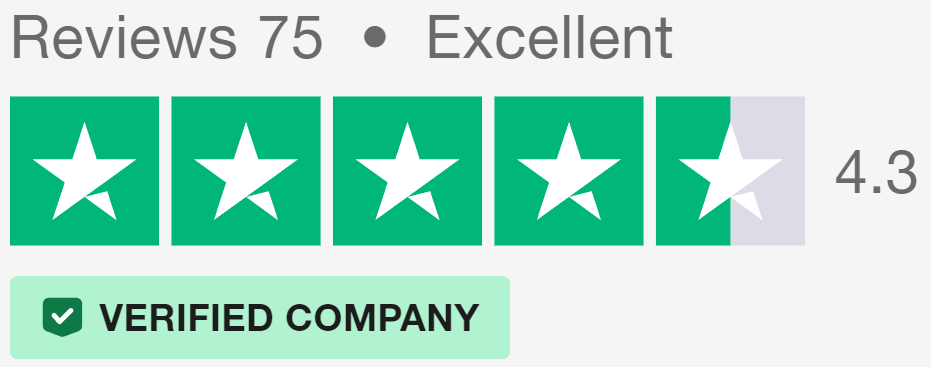
The Basics of Slide and Swing Doors
Slide and swing doors (also known as slide and pivot doors, slide and turn doors, slide and fold doors, stacking sliding doors, and slide and stack doors, amongst others!) offer a unique blend of functionality and style for homes and commercial spaces. These innovative systems feature multiple panels that both slide and pivot, creating flexible openings that adapt to various needs.
How Swing and Slide Doors Work
The mechanism behind slide and swing doors is surprisingly straightforward. Each panel moves independently along a track, allowing for easy sliding. What sets these doors apart is their ability to pivot at one end, enabling all panels to stack neatly when fully opened.
This dual functionality stems from a clever track system. The top track guides the panels’ sliding motion, while a bottom track (or sometimes a simple guide) keeps the doors aligned. At the pivoting end, specially designed hinges allow each panel to swing out, creating a wide, unobstructed opening.
Swing and slide doors typically feature 3 to 10 panels, depending on the width of the opening. This flexibility allows homeowners to choose a configuration that best suits their space and needs. Whether you’re looking to open up a small patio or create a grand entrance, slide and swing patio doors can be customised to fit.
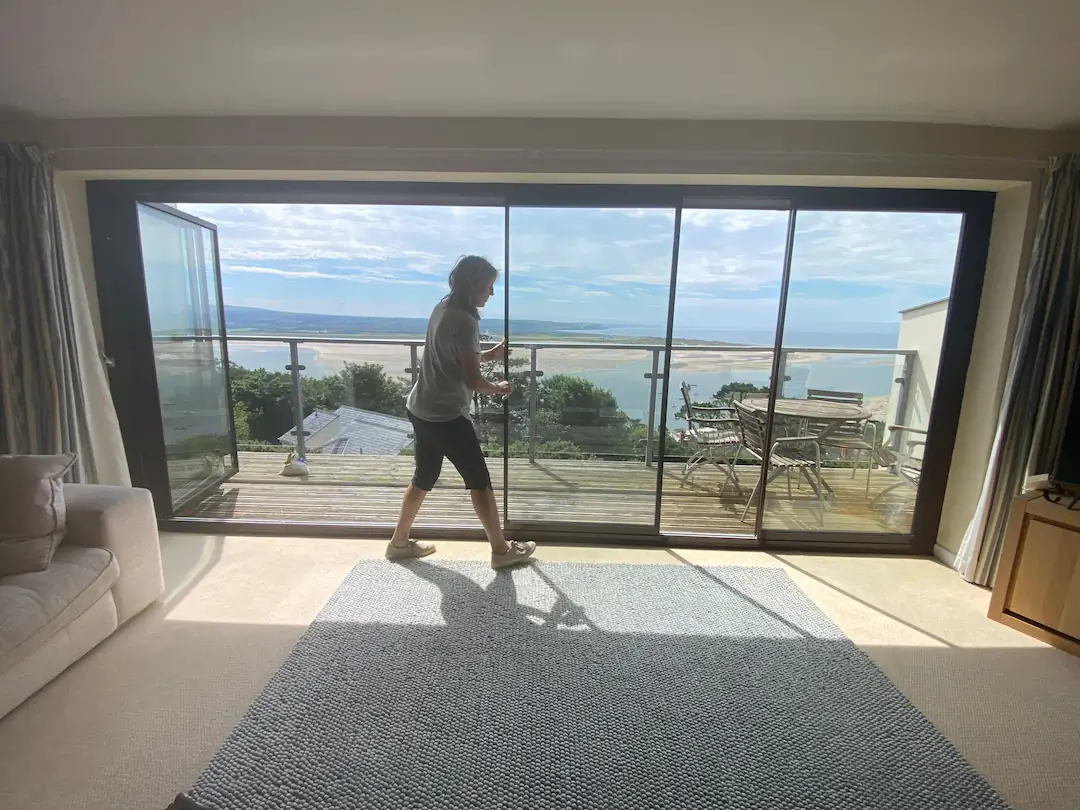
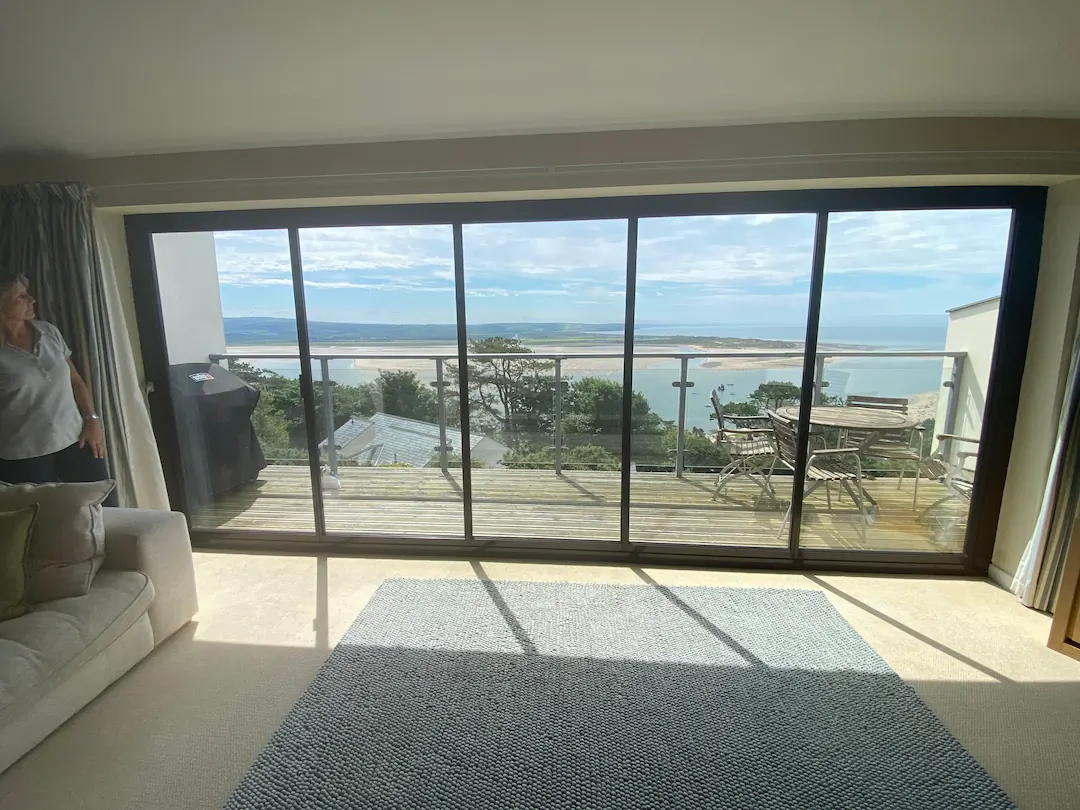
Materials Used in Slide and Swing Doors
The choice of materials for slide and swing doors can have a big impact on their performance, durability, and appearance. Three main options dominate the market: aluminium, uPVC, and timber.
Aluminium frames boast strength and slim profiles, ideal for the large glass panels often used in stacking sliding doors. They resist corrosion well, making them suitable for coastal areas. uPVC, on the other hand, offers excellent insulation at a lower cost. It’s low-maintenance but may not suit all architectural styles.
Timber frames provide a classic, warm look that many homeowners prefer. However, they require more upkeep to maintain their appearance and performance over time. Some manufacturers offer composite options, combining materials to balance aesthetics and practicality.
The choice of material for your swing slide doors will depend on various factors, including your local climate, desired aesthetics, and maintenance preferences.
Typical Configurations
Swing and slide doors come in various configurations to suit different openings and preferences. The beauty of these systems lies in their versatility – all panels can slide and swing, offering maximum flexibility.
A common setup for slide and swing patio doors features three or four panels. This arrangement allows for partial or full opening, adapting to different scenarios. For wider spaces, configurations with five or more panels provide even greater flexibility, allowing you to create expansive openings that blur the line between indoor and outdoor spaces.
The direction of opening can also vary. While most slide and swing doors open outwards, some systems allow for inward opening, which can be useful in certain architectural designs or where external space is limited.
One of the key advantages of swing and slide doors is their ability to stack compactly when fully opened. Unlike traditional sliding doors, which always occupy part of the opening, these doors can be completely folded away, maximising the available space for your family and friends, fresh air, and sunlight to flow through.
Benefits for Your Home
Slide and swing doors bring many advantages to homeowners looking to update their living spaces. These door systems can change how you use your home, offering adaptability that standard doors can’t provide.
Flexible Space Management
A key advantage of slide and swing doors is their ability to adjust to your changing needs. Unlike regular doors, slide and swing patio doors let you open your space fully or partially, depending on the situation.
Having a big party? Open your slide and swing doors completely to create a large area that flows from inside to outside. Just want some fresh air? Slide open a single panel. This adaptability makes swing and slide doors suitable for various occasions, from quiet family nights to busy social gatherings.
The stacking feature of these doors is particularly useful in compact homes or flats. When fully opened, the panels of swing and slide doors stack neatly to one side, taking up minimal room. This design helps you make the most of your available space, effectively increasing your usable living area without major renovations.
Natural Light and Ventilation
Swing slide doors typically feature large glass panels, which can substantially increase the amount of daylight entering your home. This extra light can make rooms feel more spacious, brighter, and welcoming.
The impact of natural light goes beyond looks. Research has shown that exposure to daylight can improve mood, increase productivity, and even help regulate sleep patterns. By installing slide and swing doors, you’re not just changing your home’s appearance – you’re potentially improving your overall health and wellbeing.
Another upside of this is that the increased natural light can reduce your need for artificial lighting during the day, potentially leading to lower electricity bills in larger rooms with powerful lighting requirements. This combination of improved living conditions and energy savings makes slide and swing patio doors a practical choice for many homeowners.
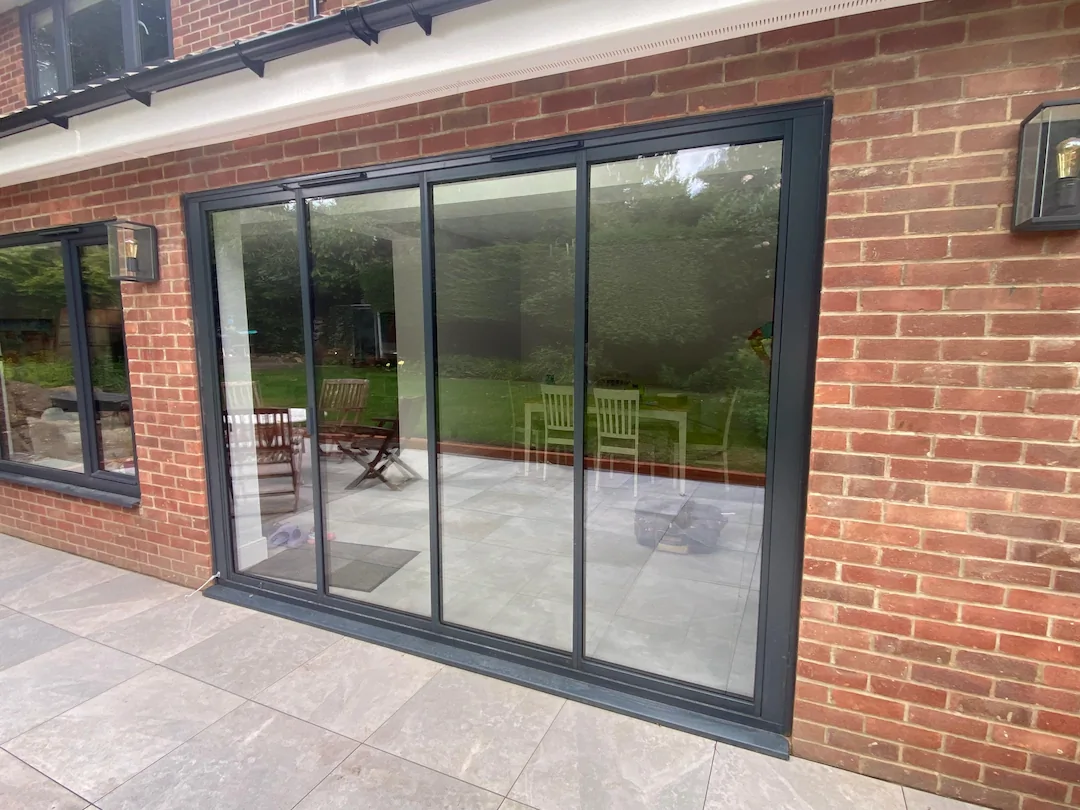
Energy Efficiency
While large glass areas might seem to conflict with energy efficiency, modern slide and swing doors are designed with thermal performance in mind. Many systems use double or triple glazing, which provides excellent insulation, helping to maintain comfortable temperatures year-round.
The tight seals on slide and swing doors also contribute to their energy efficiency. When closed, these doors create a barrier against drafts, reducing heat loss and improving your home’s overall thermal performance. This can lead to more stable indoor temperatures and potentially lower heating and cooling costs.
It’s important to note that the energy efficiency of your swing and slide doors can vary depending on the materials used and the quality of installation. High-quality systems, properly fitted, can positively impact your home’s energy performance, making them a worthwhile investment for environmentally aware homeowners. When comparing your options from different suppliers, ask them about the “U-value”. This is a measure of how good a door, window or wall is at insulating. The smaller the number, the better.
Comparing Door Types
When considering new doors for your home, it’s helpful to understand how different options compare. Let’s explore how these systems stack up against some popular alternatives.
Multi-Panel Systems vs Bifold Doors
Both options offer ways to open up large spaces, but they operate differently. Our focus system moves along a track and pivots at one end, allowing panels to stack neatly to one side. Bifold doors (also known as concertina doors), in contrast, fold in pairs or groups, concertina-style.
Space requirements differ between these two types. The system we’re discussing needs clearance at one end for the panels to pivot, while bifold doors require space along the entire opening for the folded panels. In terms of use, our system offers more flexibility – you can open just one panel for quick access or all panels for a wide opening.
Both door types let in plenty of light, but the system we’re examining often has larger glass panels, potentially offering clearer views when closed. However, when fully open, bifold doors can provide a slightly wider clear opening as they don’t have a lead panel.
Slide and Swing Doors vs Traditional Sliding Doors
Traditional sliding doors and swing and slide doors share the sliding mechanism, but the former offers additional functionality. While sliding doors typically have fixed panels and sliding panels that overlap, swing and slide doors allow all panels to move and pivot.
This extra feature means you can create larger openings than with traditional sliding doors. When you want to fully open the space, swing and slide doors can be completely moved to one side, whereas sliding doors always occupy at least half of the opening.
Maintenance needs also differ. Swing and slide doors have more moving parts due to the pivot function, which might require occasional adjustment. However, they can be easier to clean as all panels can be accessed from both sides.
Slide and Swing Doors vs French Doors
French doors are a classic choice, offering a traditional look with their hinged design. Slide and swing doors, on the other hand, provide a more modern aesthetic with their sleek lines and large glass panels.
In terms of operation, French doors swing open like regular doors, while a slide swing system combines sliding and pivoting movements. This means it can be more space-efficient, especially in areas where you don’t have room for doors to swing inwards or outwards.
French doors are typically limited in width due to the practicality of very large hinged doors. Swing and slide systems can span much wider openings, making it suitable for creating large indoor-outdoor connections.
Both types can provide good ventilation, but sliding swing doors offer more control. You can open just one panel slightly for a small airflow, or open multiple panels for maximum ventilation. French doors usually offer an all-or-nothing approach to opening.
Choosing the Right System
Selecting the ideal slide and swing doors for your home involves careful consideration of several factors. Let’s explore the key aspects to keep in mind during your decision-making process.
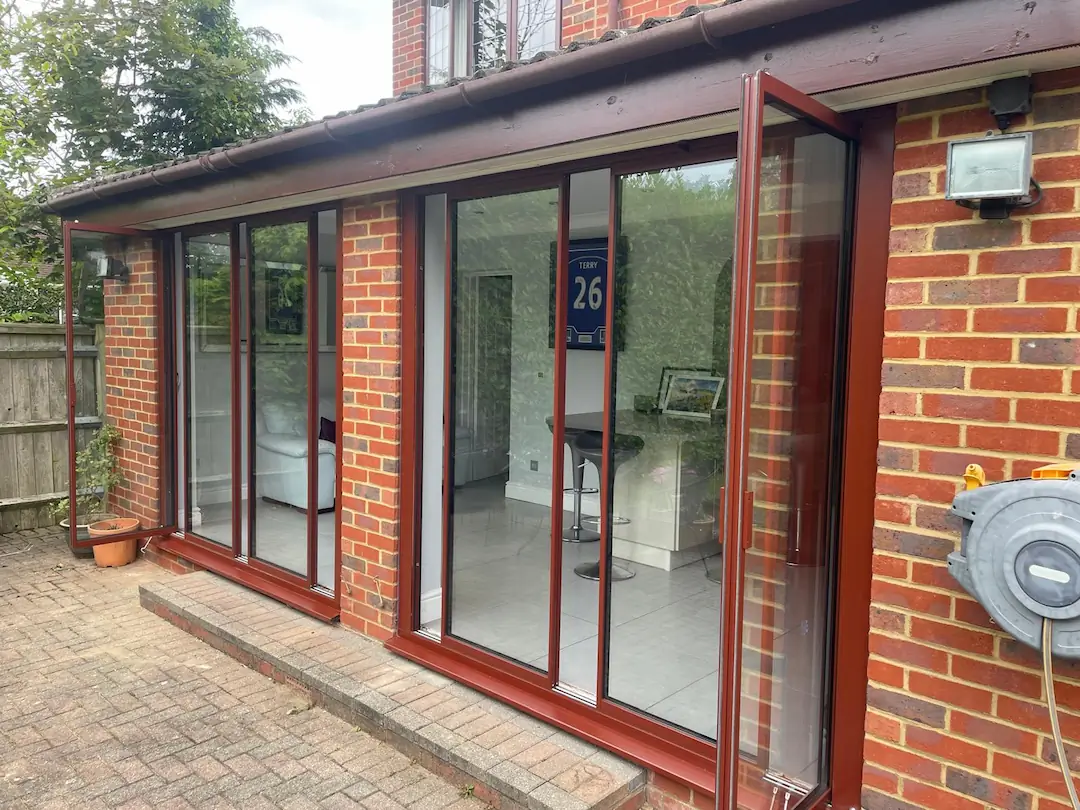
Assessing Your Space
Before settling on a particular design, take a close look at the area where you plan to install your new doors. Measure the width and height of the opening, and consider the ceiling height as well. Slide and swing doors require enough clearance for the panels to pivot, so ensure there’s sufficient space on at least one side of the opening.
Think about the flow of traffic through the area. How will people move between spaces when the doors are partially or fully open? Consider furniture placement and how it might interact with the door operation. Remember, these doors offer flexibility, but you’ll want to make the most of it by planning your space effectively.
Climate
If you live in an area with extreme temperatures, look for systems with excellent insulation properties. Double or triple glazing can help maintain comfortable indoor temperatures year-round.
For coastal locations, consider doors with corrosion-resistant materials like aluminium or specially treated timber. If your area experiences high winds, ensure the system you choose has robust locking mechanisms and weather seals to prevent drafts and water ingress.
Style and Aesthetics
Slide and swing doors can complement various architectural styles. Consider the overall design of your home when selecting frame materials and colours. Aluminium frames offer a sleek, modern look, while timber frames can provide a warmer, more traditional aesthetic.
Think about the glass options too. Clear glass maximizes views and light, but you might want to consider tinted or frosted glass for added privacy. Some systems also offer integrated blinds (integral blinds) between the glass panes, combining practicality with a clean look.
Maintenance and Care
Proper maintenance of slide and swing doors ensures their longevity and optimal performance. With regular care, these systems can continue to operate smoothly for years to come.
Routine Cleaning Tips
Keeping your slide and swing doors clean is straightforward but important. Start by removing loose dirt and debris from the tracks using a vacuum cleaner with a brush attachment. This prevents grit from damaging the rollers and ensures smooth operation.
For the glass panels, use a mild, non-abrasive cleaner and a soft cloth. Avoid harsh chemicals that might damage the glass or frame finishes. Clean both sides of the glass to maintain clear views and maximize light transmission.
Wipe down the frames with a damp cloth, paying extra attention to the bottom rail where dirt tends to accumulate. For timber frames, check the manufacturer’s guidelines about appropriate cleaning products to preserve the wood’s finish.
Lubrication and Adjustment
Proper lubrication keeps slide and swing doors operating smoothly. Apply a silicone-based lubricant to the rollers and pivots every six months or as recommended by the manufacturer. Be careful not to over-lubricate, as this can attract dust and grime.
Over time, you might notice the doors becoming slightly misaligned. Most systems allow for easy adjustment of the rollers and hinges. Consult your user manual for guidance on making these minor tweaks. If you’re unsure, it’s best to call a professional to avoid damaging the mechanism.
Design Possibilities
Slide and swing doors offer numerous design options to suit various architectural styles and personal preferences.
Frame Colours and Finishes
The frames of slide and swing doors come in a wide range of colours and finishes. For a modern look, consider sleek black or dark grey frames that create a striking contrast with your walls. If you prefer a more subtle appearance, white or neutral tones can blend effortlessly with most colour schemes.
Metallic finishes like anodized aluminium offer a contemporary feel and excellent durability. For a warmer, more traditional look, wood grain effects or actual timber frames can add natural beauty to your space.
Many manufacturers offer dual colour options, allowing you to have different colours on the interior and exterior of the frames. This flexibility lets you coordinate with both your indoor decor and outdoor façade.
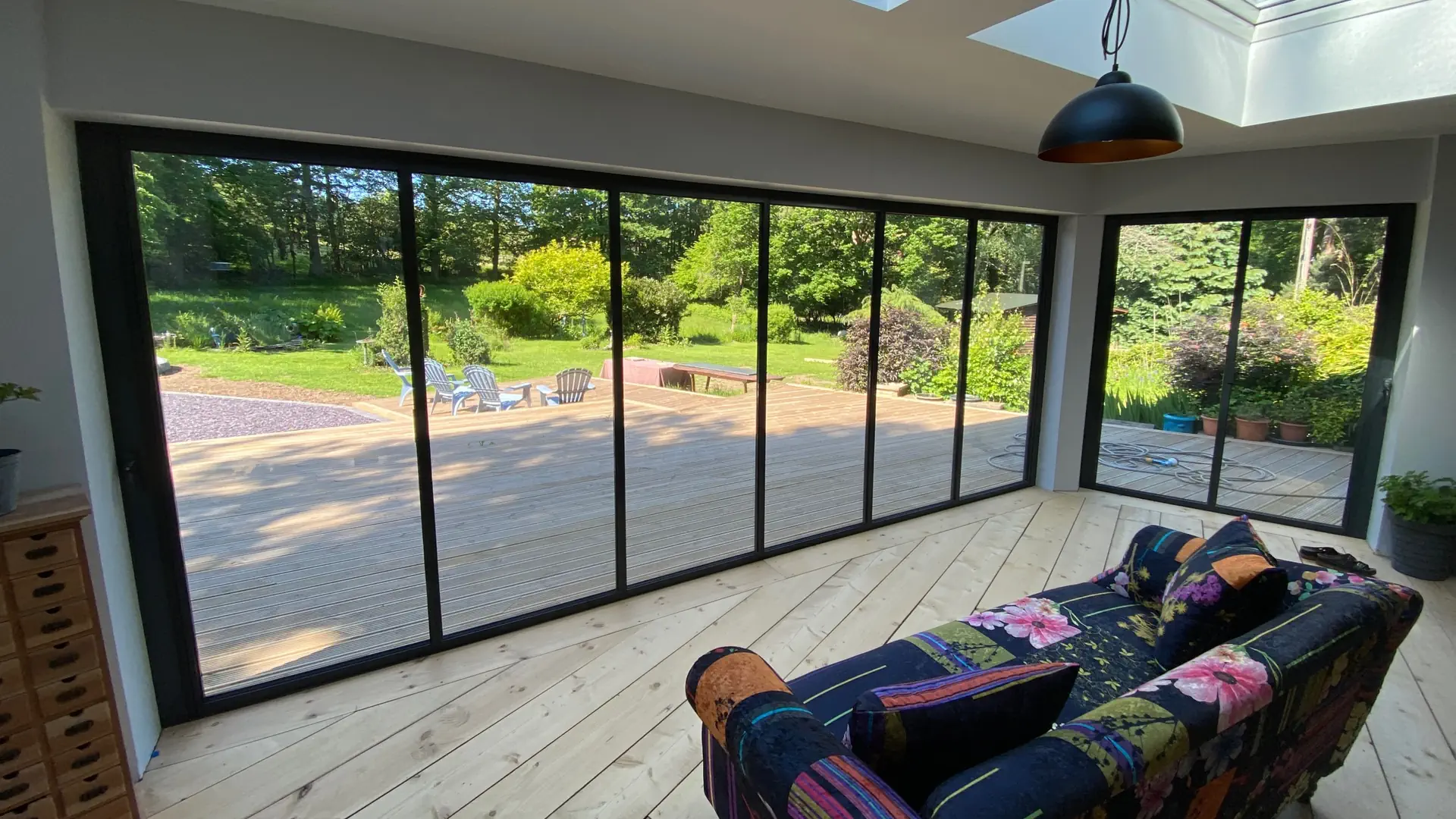
Glass Options
Clear glass maximizes views and light transmission, ideal for showcasing beautiful landscapes or garden views.
For added privacy or to reduce glare, consider tinted or frosted glass options. Low-emissivity (low-E) glass is an excellent choice for improving energy efficiency, as it helps to reflect heat back into your home during winter and keep it cooler in summer.
Some systems offer triple glazing for superior insulation, which can be particularly beneficial in areas with extreme temperatures. For added safety, toughened or laminated glass options are available, providing extra security and peace of mind.
Hardware and Accessories
The hardware you choose for your slide and swing doors can add both style and functionality. Handle designs range from minimalist straight pulls to more ornate lever handles, allowing you to match your doors to your overall interior design theme.
Consider the locking system carefully. Multi-point locking mechanisms offer enhanced security, while keyed alike options allow you to use the same key for all your doors, simplifying access.
For added convenience, you might want to explore motorized operating systems. These can be particularly useful for larger door setups or for homeowners with mobility issues.
Finally, don’t overlook the potential of integrated blinds or shades. These systems, fitted between the glass panes, offer a sleek solution for controlling light and privacy without the need for separate window treatments.
Slide and Swing Door Ideas
Slide and swing doors find their place in a variety of settings, from residential homes to commercial spaces. Their versatility and functionality make them a popular choice for those seeking to blur the lines between indoor and outdoor areas.
Open-Plan Living Spaces
In modern homes, the trend towards open-plan living continues to grow. Swing and slide doors excel in these environments, offering the flexibility to divide or unite spaces as needed. Imagine a kitchen-diner that opens fully onto a patio for summer barbecues, then closes snugly to keep the warmth in during winter months.
These doors allow homeowners to adapt their living spaces to suit different occasions. For day-to-day life, a single panel might be used for easy access to the garden. When entertaining, the fully open configuration creates a spacious area perfect for guests to mingle, moving freely between inside and out.
The ability to stack the panels to one side is particularly useful in smaller homes, where space is at a premium. Unlike traditional patio doors, slide and swing patio doors don’t encroach on valuable floor space when open, maximising the usable area.
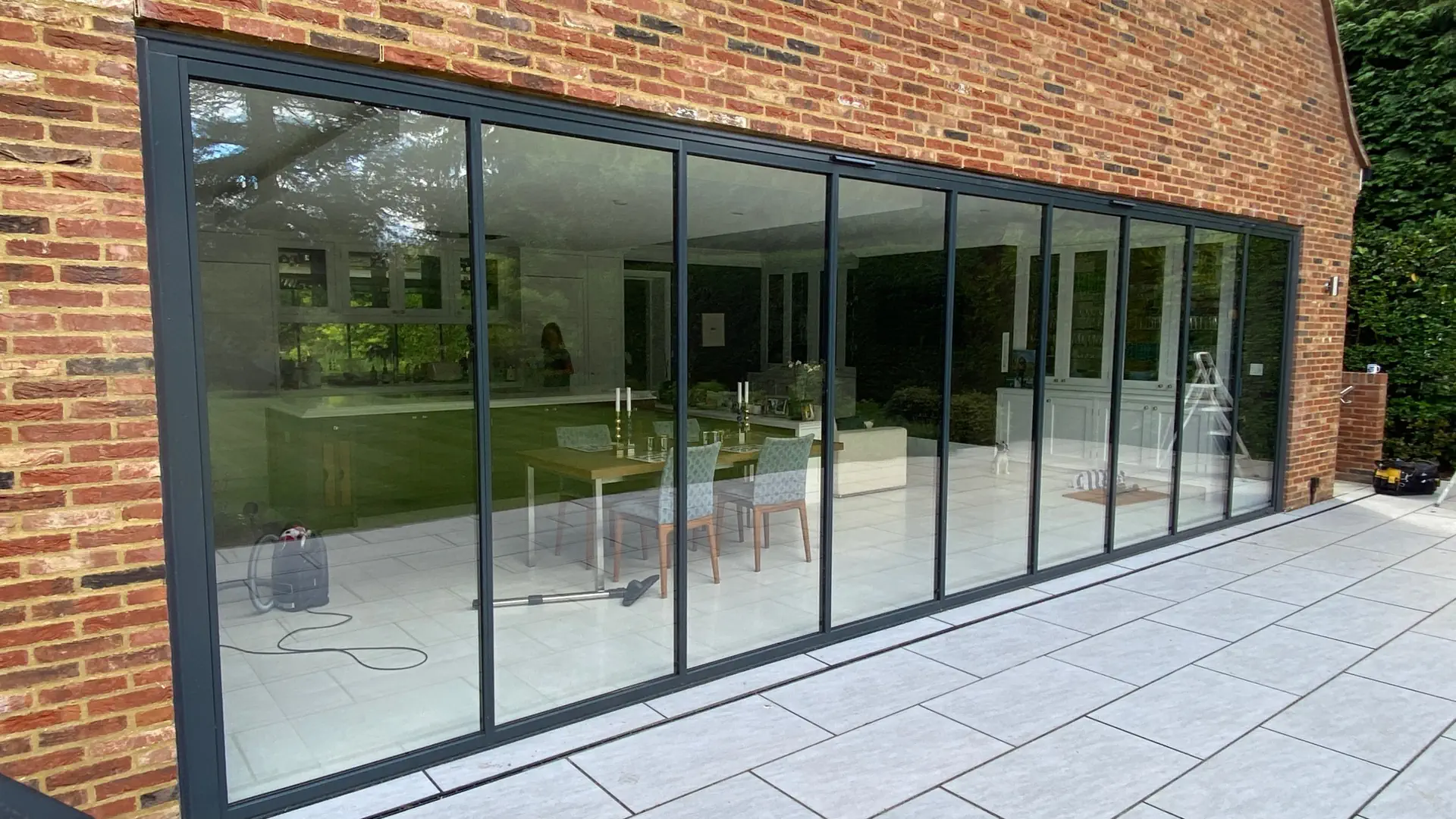
Garden Access Solutions
For homes with beautiful gardens or scenic views, slide and swing doors provide an ideal way to connect with the outdoors. Their large glass panels offer unobstructed views even when closed, bringing nature closer to your living space.
These doors are particularly effective for properties with decking or patios. The low threshold options available with many slide and swing door systems create a smooth transition from inside to outside, perfect for those balmy summer evenings or for keeping an eye on children playing in the garden.
In urban settings, where outdoor space might be limited, these doors can help make the most of small gardens or balconies. By opening up the entire wall, even a modest outdoor area can feel like an extension of the living space.
Commercial Uses
While often associated with residential properties, slide and swing doors have found their way into various commercial settings. Cafes and restaurants use these doors to create al fresco dining areas that can be quickly adapted to changing weather conditions.
In office environments, slide and swing frameless office glass partitions are used to divide meeting rooms or create flexible workspaces. Their sound-insulating properties, when closed, ensure privacy for important discussions, while the ability to open them fully allows for collaborative, open-plan working when needed.
Hotels and resorts often install these doors in guest rooms and communal areas, allowing visitors to fully appreciate scenic locations. The doors’ ability to open wide creates an inviting indoor-outdoor flow that guests appreciate, especially in warmer climates.
Frequently Asked Questions About Slide and Swing Doors
Are swing and slide doors energy efficient?
Modern swing and slide doors often feature double or triple glazing and thermal breaks in the frames, which can contribute to better energy efficiency in your home.
How do slide and swing doors compare to traditional patio doors?
Slide and swing doors offer more flexibility than traditional options. While standard sliding garden doors typically have fixed panels, slide and swing systems allow all panels to move, providing wider openings and better access to outdoor spaces.
What's the difference between slide and swing doors and bifold doors?
The main difference lies in their opening mechanism. Slide and swing doors glide along a track and pivot at one end, while bifold doors fold in a concertina style. If you’re looking for a bifold door alternative that offers similar benefits with a different operation, slide and swing doors could be an excellent choice.
Can slide and swing doors be used for interior spaces?
Absolutely! Slide and swing doors aren’t limited to external use. They can function beautifully as glass living room doors, allowing you to divide spaces when needed while maintaining an open, airy feel when fully retracted.
Can swing and slide patio doors be used as a room divider?
Certainly. Swing and slide patio doors can function effectively as a room divider, allowing you to separate or combine spaces as needed while maintaining a stylish, cohesive look.
How many panels can stacking sliding doors have?
Stacking sliding doors can accommodate various configurations, typically ranging from two to eight or more panels, depending on the width of your opening and your specific needs.
Are there different styles of slide and swing doors available?
Yes, slide and swing doors come in various styles to suit different architectural preferences. For those who appreciate industrial chic, crittall style doors are gaining popularity. These doors feature slim metal frames divided into smaller panes, offering a striking visual impact.
What security features do slide and swing doors offer?
Modern slide and swing doors come with robust security features. Many systems include multi-point locking mechanisms and toughened glass for added safety. If security is a key concern, discuss the available options with your supplier. Remember, glass panelled doors, including slide and swing types, can be both stylish and secure when properly designed and installed.
Made to Measure Slide and Swing Doors and More
Vision Glass Doors is a designer, manufacturer, and installer of premium door systems. We are a family run business with over 20 years’ experience and 5,000 installations across the UK.
All our systems are made to measure, designed, and fabricated at our manufacturing facility in Luton, Bedfordshire. We offer installation within a 100-mile radius.
Our leading range of door systems include Ultra Slim – Slide and Turn Doors, Slimline Sliding Patio Doors and Frameless Glass Doors. Suitable for various internal and external applications, they are applicable to residential and commercial projects.
Click Quick Quote Online for a free quotation within 24 hours. Alternatively, call or email us on 01582 492730 or at info@visionglassdoors.co.uk.

